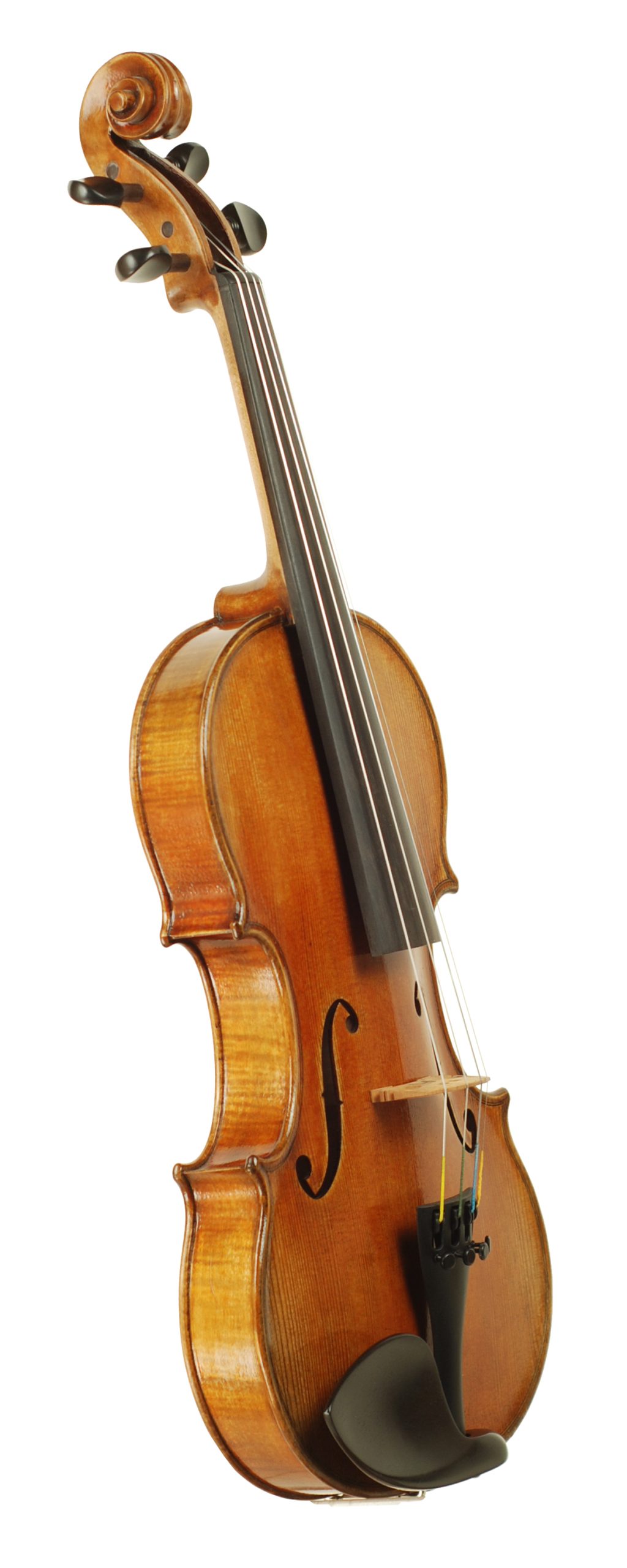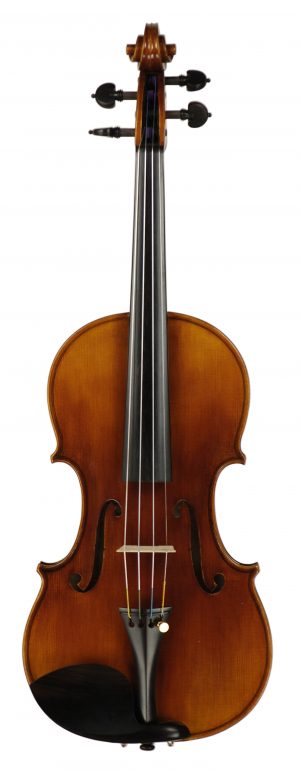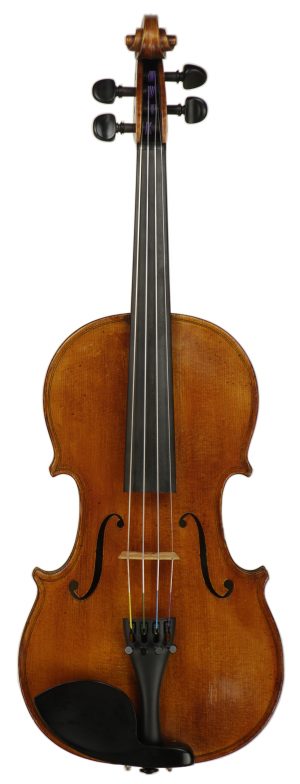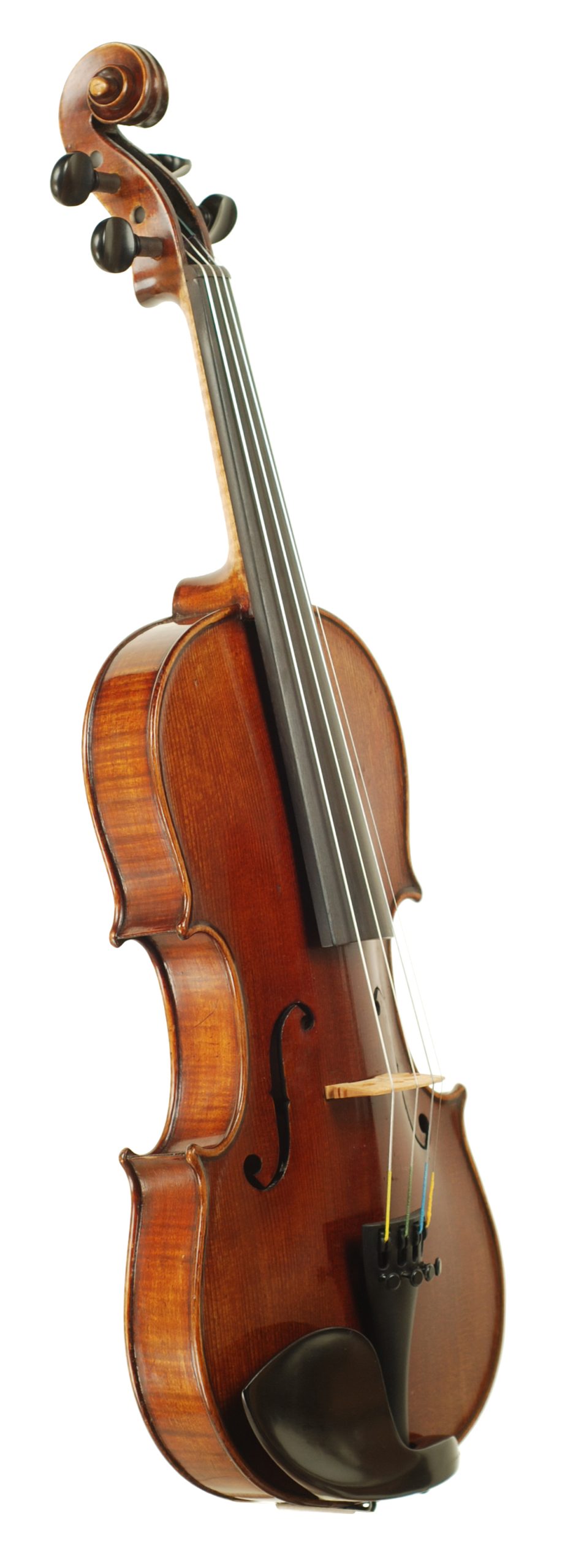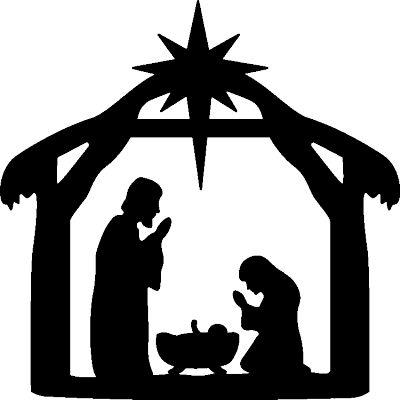A Fine Mirecourt H. Derazey Workshop Violin circa 1870 – SOLD JUNE 13, 2025 –
$5,850.00
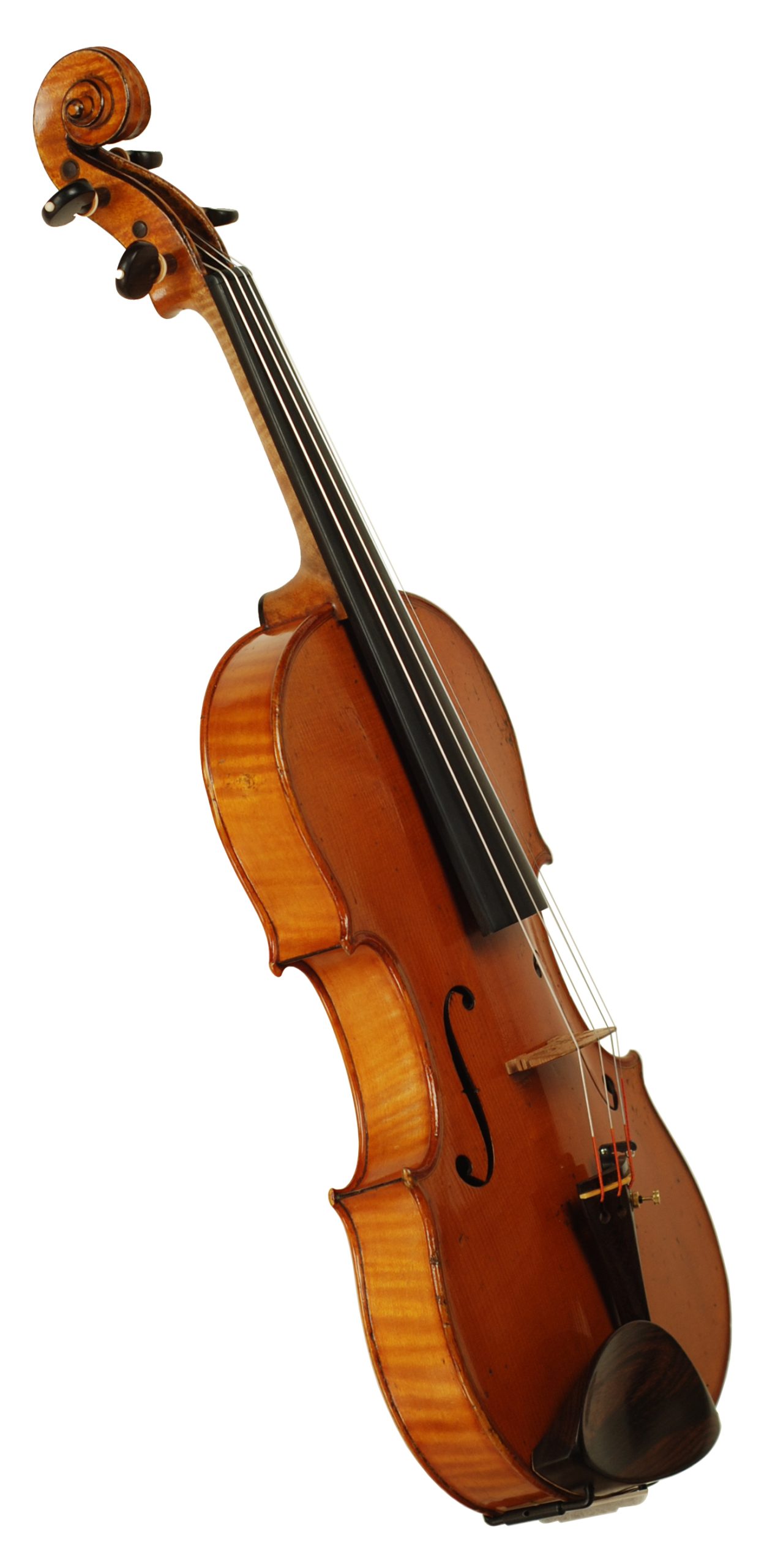
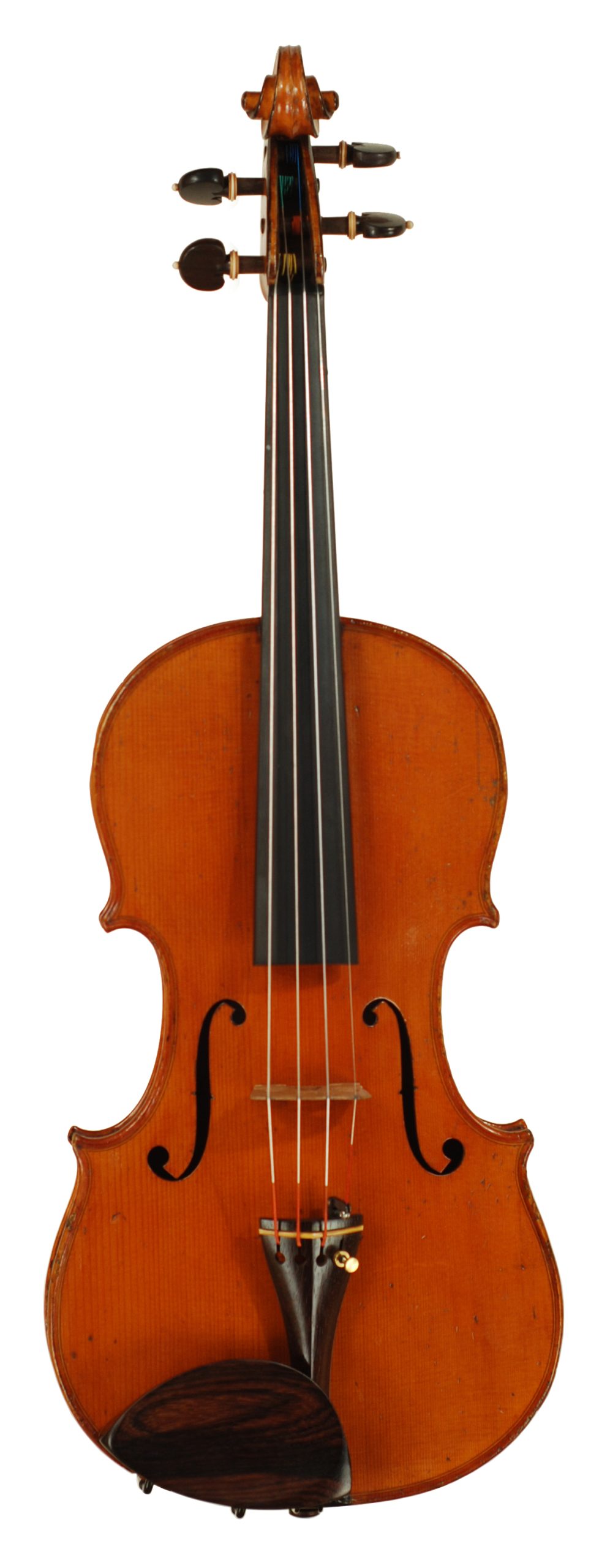
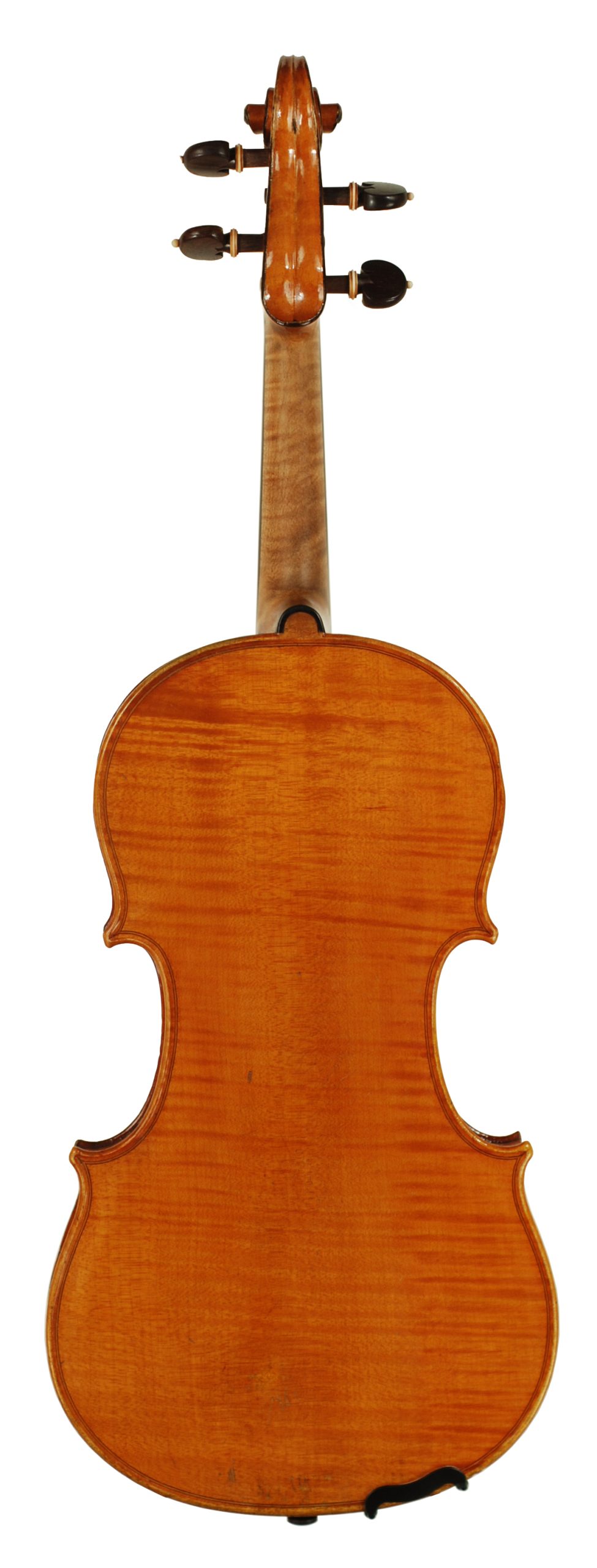
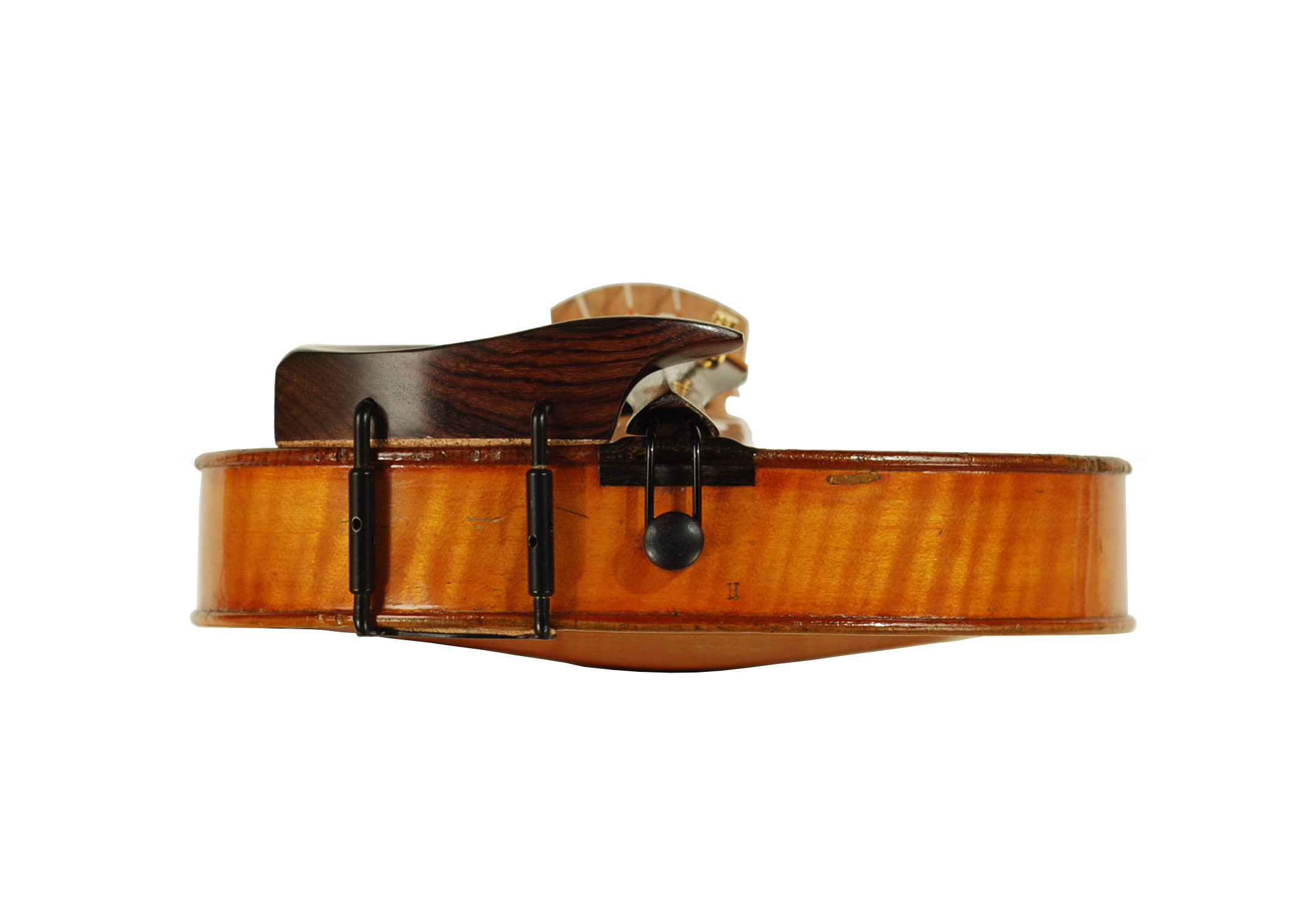
click picture to enlarge
We have a fine Mirecourt violin from the Honoré (Jean Joseph) Derazey workshop. Derazey’s workshop worked under the name H. Derazey. This violin was made in the 1870’s and based on a large model Antonio Stradivari. Jean Joseph Honoré Derazey (1794-1883) trained in Mirecourt and then worked for various makers in Paris, including J.B. Vuillaume’s shop from 1830-1839. Derazey was his most valuable apprentice and then employee. He quickly became an excellent craftsman and soaked in every opportunity to develop and excel in the craft. He spent nine years under the demanding Vuillaume, and his work shows great influence in the carving, the modeling, and in the clarity of the varnish. In 1840 Derazey established his own workshop back in Mirecourt, and in 1879 he was joined in the firm by his son Justin.
Our instrument has a delicate blackened scroll, and a rich coat of glowing transparent orange/brown oil vanish on a golden orange base. The one-piece top of the instrument is unique; made of spruce, the grain is very narrow-width on the treble side and widens significantly at the bass side. I would have loved to have seen their graded wood piles and the quality of the wood selection. Trees selected for this shop were probably growing in the 1700’s and harvested in the mid 1800’s, cut, split, air dried, and stockpiled by the ton. Wow! This fine French violin contains purfling that is so accurate, delicate with exacting bee stings. The sound holes are petite and very finely cut. Remember – no electrical tools! I have added a new edge to the top plate, lower bout treble side which has had no impact on the vibrating table of the plate. We have bushed all eight peg holes and cut all new Rosewood fittings. We have cut a new/old 200-year-old deluxe Aubert bridge that was originally cut as a blank in Mirecourt, this violin’s hometown. This instrument is in very good condition and has a special capital “H” branded on the lower rib to the right and slightly lower than the end button. Inside the violin the only other marking is the number 5079 in place of a label. I believe this to be a number placed inside the violin later to catalogue the instrument at a fine shop. No second- or third-year journeyman carved this instrument. This was a skilled person with dozens of years carving and perfecting his craft. The maple back is one-piece with medium- to fine-width flame that descends from right to left. The wood again is choice, totally outstanding and the back plate shows some patina and case wear. It is almost non-visible. The violin is truly light in its overall weight, it is like a feather. The neck, ribs, and scroll are well flamed and match the back. The tongue has an ebony crown cut for the violin, which is a beautiful color contrast, adding more charm to the instrument.
Corpus 358.5 mm., Major Width 209.0 mm., Minor Width 167.0 mm., Rib Height 29.5-30.0 mm.
The instrument has a mature sound which shines on the bass and the treble side. I love the overtones and the guts of the bass side while it also oozes plenty of power. The treble side is radiant and adds to the sophistication of the violin. Yes, tremendous sound, beautiful resonance, and a distinctive character set this violin apart. The violin responds and is rewarding to play. An excellent violin for a very good player and soloist. It is violin that is articulate and full of expressive potential. A workshop instrument that is at the top of the curve. What a gem.
